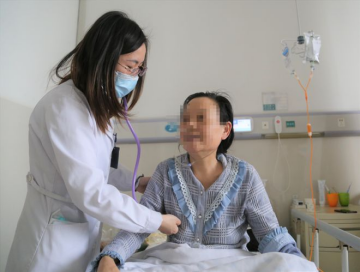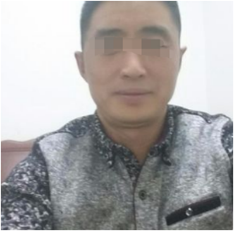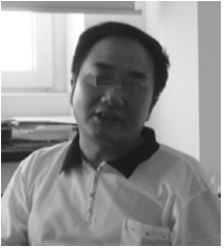Knee joint injury is a condition involving structural and functional abnormalities of the knee caused by trauma, degenerative changes, inflammation, or biomechanical imbalances. It encompasses various pathological types including cartilage damage, meniscal tears, ligament injuries, synovitis, and osteoarthritis. As the largest and most complex weight-bearing joint in the human body, the knee functions through the coordinated action of bones, cartilage, ligaments, tendons, and synovium to facilitate flexion-extension movements and load transmission. Injury or chronic degeneration can lead to reduced joint stability, limited mobility, pain, and inflammatory responses, which severely affect a patient’s walking ability and quality of life. Without timely intervention, progressive cartilage degeneration, joint deformity, and secondary muscle atrophy may occur, so prompt treatment is advised.
Stem cell therapy targets the repair of damaged tissues, modulation of the inflammatory microenvironment, and promotion of cartilage regeneration, offering an innovative solution for both degenerative changes and post-traumatic repair of the knee joint.
Mesenchymal stem cells (MSCs) differentiate into chondrocytes and secrete type II collagen and proteoglycans, repairing cartilage defects and promoting the regeneration of fibrocartilage in the meniscus.
Stem cells inhibit the release of pro-inflammatory cytokines and upregulate anti-inflammatory factors, reducing synovial inflammation and joint effusion, thereby slowing the progression of osteoarthritis.
Through the paracrine secretion of vascular endothelial growth factor (VEGF) and transforming growth factor-β (TGF-β), stem cells promote the proliferation of ligament fibroblasts and collagen remodeling, enhancing joint stability.
Stem cells eliminate free radicals, improve hypoxic conditions, activate endogenous repair signals, and delay chondrocyte apoptosis.
Prior to initiating clinical treatments, we established a specialized research team to conduct in-depth animal studies focused on knee osteoarthritis. From developing highly accurate animal models that closely simulate human conditions, to systematically optimizing administration routes and dosages, defining scientific evaluation criteria, and studying potential adverse reactions, we have laid a solid groundwork for the clinical application of cell therapy in arthritis. This comprehensive research effort has provided valuable firsthand data and practical experience, significantly reducing uncertainties in clinical practice.
Over time, our team has accumulated extensive experience through a large number of clinical cases involving arthritis treatment. Our medical professionals possess the keen ability to identify potential risks during treatment and, drawing on their expertise and deep practical knowledge, are able to accurately assess and manage those risks. Based on this, we implement effective risk control strategies to substantially reduce the incidence of complications associated with cell therapy—creating a safe and reliable therapeutic environment that supports patients throughout their recovery journey.
Recognizing the individual differences among patients, we conduct thorough assessments that consider factors such as triggers of disease onset, specific symptoms, and physical condition. Based on this evaluation, we develop fully personalized biological treatment plans. With the aid of musculoskeletal ultrasound-guided injection technology, cells are precisely delivered into the joint cavity, ensuring a painless, minimally invasive procedure. This method not only produces rapid therapeutic effects but also minimizes the risk of side effects, enhancing both comfort and safety for patients.
To achieve the best possible therapeutic results, we go beyond the limitations of conventional single-mode treatments. Our innovative approach combines cell therapy with rehabilitation training, conventional pharmacological treatments, and traditional Chinese medicine techniques such as acupuncture and manual therapy. The synergistic effect of these integrated therapies allows each method to complement the others, forming a comprehensive treatment system that significantly improves outcomes and accelerates patient recovery.
From the start of treatment, we create a dedicated rehabilitation file for each patient and offer continuous follow-up services throughout the entire treatment cycle. Our professional medical team conducts regular follow-ups to address patient concerns, provide expert rehabilitation advice, and deliver holistic health guidance. By offering timely support and resolving challenges during the recovery process, we accompany patients every step of the way on their journey toward full recovery.
Since 2015, Our medical team has completed over 4,200 cases of stem cell therapy for knee joint injury/pain, covering the following types:
Characterized by cartilage degeneration and osteophyte formation, commonly seen in middle-aged and elderly patients.
Includes longitudinal tears, bucket-handle tears, and degenerative lesions.
Partial or complete tears of the anterior cruciate ligament (ACL) and medial collateral ligament (MCL).
Joint stiffness caused by fractures or postoperative adhesions.
Focused on controlling the underlying disease and minimizing damage to the knee joint.
Aims to reduce blood glucose and uric acid levels while restoring joint function and relieving discomfort.
Major Patient Improvements
We integrate stem cell technology, minimally invasive surgical techniques, AI-driven rehabilitation systems, and a comprehensive long-term follow-up framework to deliver a full-cycle solution for patients with knee joint injury/pain—covering everything from acute intervention to long-term disease management. Through the establishment of a "Treatment-Rehabilitation-Prevention" database, we are able to anticipate long-term complications and develop targeted intervention strategies, empowering patients to regain mobility and restore confidence in their daily lives.




